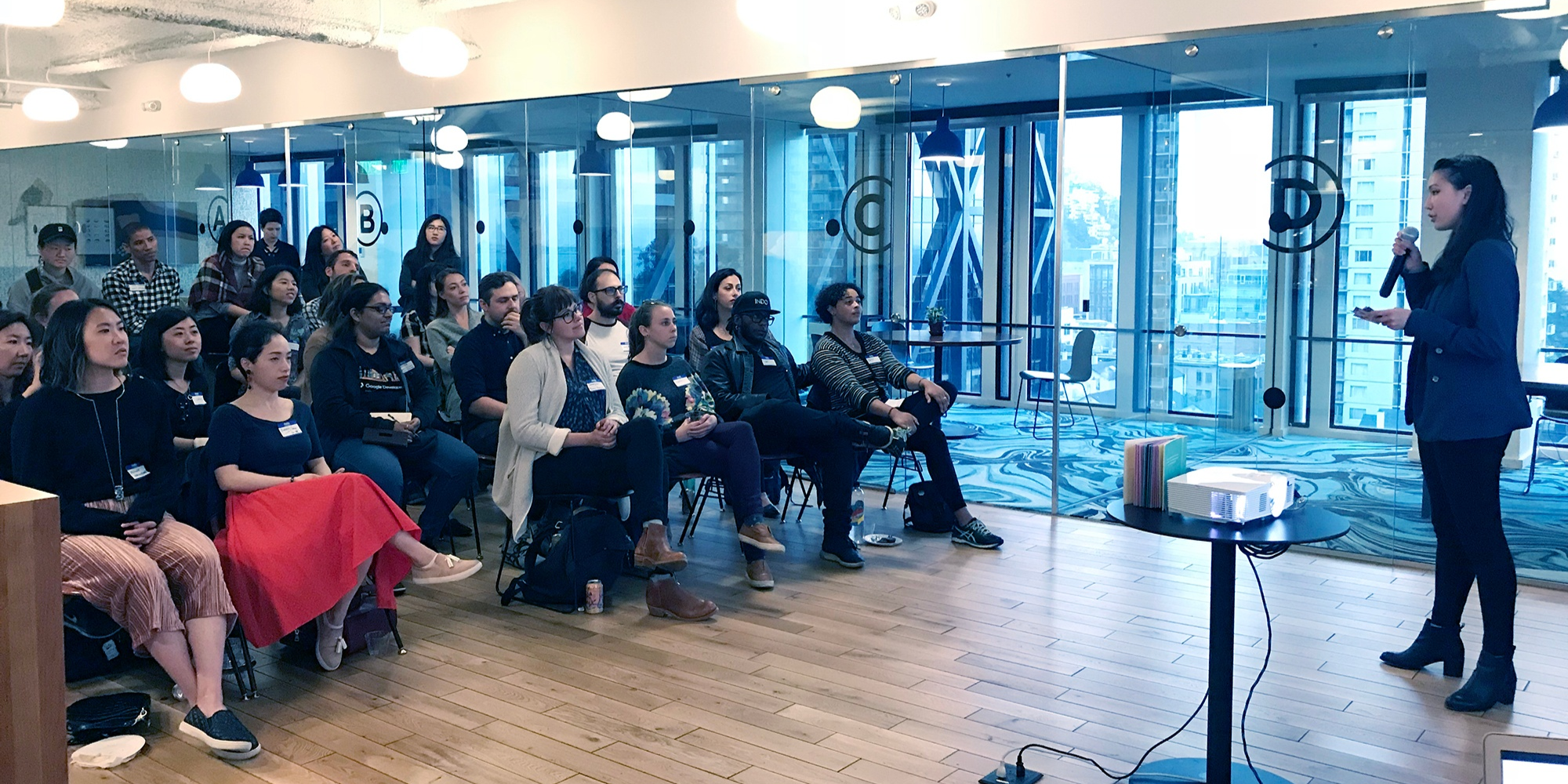Lightning Talks
Short, highly focused presentations
Karen Batt
What Is Lightning Talks?
Lightning talks are short, highly focused and effective presentations. When they are done well, they are a great way to get your point across in a limited period of time. The time restriction forces speakers to edit the message, and only the critically important elements remain. They have been used a lot by scientists and tech groups to switch the focus from “look at everything I know” to “what is the most important thing for you to know right now?”
Lightning talks have a specific format and recommended structure, that make them stand out from other short talks.
For your Lightning talk there are 3 main formats to choose from: 1) Lightning talk, 2) PechaKucha® and 3) Ignite.
1) Lightning talk
- A lightning talk is usually 5 minutes long, or can be up to 10 (predetermined limit)
- Slide use is optional
- The number of slides used is also optional
- Slides are advanced by the speaker, and there is no restriction on how long a slide can be displayed
2) PechaKucha®
PechaKucha® means “chit chat” in Japanese, and this style of talk came from a desire to "talk less, show more”. It is different to a traditional Lightning talk in the following ways:
- It requires the use of 20 slides
- Slides advance automatically every 20 seconds
- Talk time is always 6 minutes 40 seconds
3) Ignite
Ignite talks are similar to PechaKucha® talks in concept, and also require 20 slides. There are 2 differences:
- Slides advance automatically every 15 seconds
- Talk time is always 5 minutes exactly
Why Do Lightning Talks?
Lightning talks are really useful for introducing a new topic, for presenting a challenge/call to action, for sharing knowledge/experience and can be a refreshing way to provide status updates.
Lightning talks are a great way for scrum teams to share their experience with each other either specifically about the current sprint challenges or the project more generally. The team can also use them to give feedback to the product owner and other stakeholders at the end of a sprint. Even the product owner can use this format to share their vision/business needs with the scrum team/s for upcoming sprints.
Lightning Talks are often used in “lunch and learns” where the team listens to different members presenting solutions, ideas and other relevant content related to the sprint or larger project. You can also use lightning talks as a way to present a topic, and then debate together what has been presented, just don’t forget to time box this part too!
How to do Lightning Talks?
Here’s how to structure your talk to make it a Lightning talk, rather than anything else:
- Confirm what Format your Lightning talk will follow, and the required length
- Write your Title
- Write your Conclusion (think of this as marking your destination on your map)
- What is the Idea you want to get across? (keep this to ONE line only)
- What is the Main objection to this idea/ main problem faced? (again, just ONE line)
- Bring the Idea+Main objection together (this is often a balance, so acknowledge the tension between the 2 elements, and focus on the outcome you want to achieve)
- Now go back and develop what else is absolutely crucial to say (only this, nothing more). Think about your Idea, your Main Objection, and how they come together.
I find it helpful to think of this like mapping out the landlarks on your journey, focusing on the most important elements needed to guide the audience from the start to their destination, without getting lost along the way.
If you are going to use slides...
- Then choose the words for your slides (only use them when absolutely necessary, and use as few as possible!)
Tips for presenting:
Once you have created your content, the final challenge is to get to the stage where you can give your whole presentation with your eyes closed. I mean this literally. When you are able to do your presentation without looking at your notes, without even using your slides, then you are ready.
This way, on the day of your presentation, even if you have a last minute logistical nightmare (which can happen despite your best planning and preparation), you can provide value to your audience/team/customer, by communicating the most important thing for them to know now.
Look at Lightning Talks
Links we love
Check out these great links which can help you dive a little deeper into running the Lightning Talks practice with your team, customers or stakeholders.
